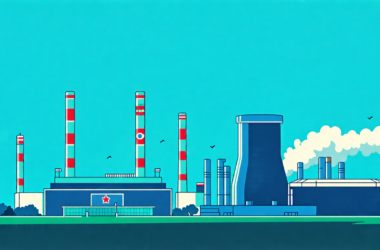Resurgence of Uranium Mining
As the global demand for nuclear energy escalates in the face of climate change, the uranium mining sector is experiencing a revival. Many previously dormant uranium mines in the United States and other countries have resumed operations. Notably, the Pinyon Plain uranium mine in Arizona has reopened after an eight-year hiatus, a clear indicator of growing confidence in the nuclear energy sector. The International Atomic Energy Agency (IAEA) forecasts that worldwide uranium needs could reach up to 100,000 metric tons annually by 2040, prompting an urgent need for increased mining and processing initiatives.
This resurgence is primarily driven by the changing dynamics of energy demands and supply chains. Supply shortages have emerged as leading uranium producers like Cameco and Kazatomprom have faced operational challenges. These production setbacks have led to a tightening market, compounded by years of underinvestment in mining and exploration activities. The increased demand juxtaposed with these production difficulties has created a significant supply squeeze in the uranium market.
Market Influences and Regulatory Landscape
The price of uranium has seen notable growth, climbing to over $90 per pound. This upward trend is primarily a result of high demand and limited supply, which has rendered previously unprofitable mining deposits economically viable. As geopolitical tensions rise, particularly concerning dependencies on uranium from countries like Kazakhstan and Russia, a domestic sourcing strategy has been increasingly prioritized. This shift aims to bolster energy security and reduce reliance on these foreign suppliers, given their potentially unstable nature.
Technological innovations, including small modular reactors (SMRs), have also played a role in increasing the appeal of nuclear energy as a sustainable power source. These advancements address earlier concerns surrounding safety and waste management, widening nuclear’s application portfolio and boosting uranium demand. Concurrently, the pressures of growing electricity consumption, driven by factors such as industrialization and the expansion of electric vehicles, heighten the need for scalable, low-carbon energy solutions, reinforcing the role of nuclear energy and, by extension, uranium.
Environmental and Societal Implications
The resurgence of uranium mining, however, is not without its challenges. There are rising concerns about the environmental and societal impacts associated with mining activities, particularly among Indigenous communities who have historically faced adverse effects from uranium exploration and extraction. While newer technologies, such as in-situ leaching, are marketed as more environmentally sustainable alternatives, skepticism remains prevalent among those affected and environmentalists alike.
In conclusion, the revival of uranium mining signifies important strategic and economic developments. As nations strive for energy independence and look to enhance local economies through job creation, the focus on domestic uranium production aligns with broader energy policy initiatives. The interplay of market dynamics, technological advancement, and environmental considerations will shape the future landscape of the uranium industry as it contributes to global energy goals.










